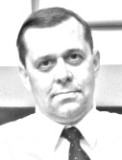HealthManagement, Volume 13 - Issue 1, 2013
How many new radiologists graduate each year in Russia and what is the total number of radiologists already working there?
There are no official statistics for the number of new radiologists graduating each year. However, according to the number of teaching sites we can estimate that there are around 400-500 new radiologists annually.Officially we have 14,000 radiologists (Ministry of Health, 2012) and about 1000 nuclear medicine specialists. Radiologists make up about six per cent of medical doctors in the country.
How many of the new graduates go on to find employment in Russia compared to the number that move abroad?
The number of radiologists moving abroad is not substantial, as due to our system of medical training Russian doctors need to enter a residency programme in order to become a radiologist in Western countries. Emigration of trained radiologists abroad is not a problem - only around 20-30 leave each year.In terms of supply and demand, are there sufficient numbers of graduates and experienced radiologists in your country to fill the available posts? Does this fluctuate, and if so, has it been affected by cuts in healthcare spending?
Russia lacks radiologists who have been trained in multimodality imaging. Russian Ministry of Health reports list radiology as a medical specialty with a deficit of specialists. The ministry estimates that Russian healthcare lacks about 153,000 medical doctors. If six percent of doctors are radiologists, we can estimate that we need another 9000 radiology specialists. The lack of radiologists is mostly a problem for outpatient clinics and small hospitals in towns and villages. The main reason is the low salaries of radiologists and radiographers.What is your strategy to attract and retain the best radiologists?
There is no state policy to attract and retain best specialists. Each hospital tries to solve this problem individually. Usuallythe most effective way is bonuses on top of the official salary for extra work. Most hospitals are permitted to perform examinations of patients from private insurance companies. Hospitals with modern and better diagnostic equipment have better chances to keep specialists.
Do sufficient numbers of radiologists enter a career in academic radiology in your country?
The number of radiologists entering academic radiology is low. Again, the main reason is low salaries.Which is stronger in your country: public or private radiology? Are radiologists interested in a career in the public sector?
Russia has a state system of healthcare. Private medicine also exists. But public radiology is dominant. Most radiologists consider work in a private imaging centre as a second parttime job; they may not be sure that the position of full-time radiologist in a private centre is stable enough in the long run. Salaries in private imaging centres are usually higher than in the public sector.Would you say there are sufficient numbers of native radiologists for the number of posts available (both public and private)? Are workers actively sought from abroad to fill empty posts?
Russia has a deficit of radiologists with modern training. The state healthcare system has bought a substantial number (inthe hundreds) of new CT and MRI systems and lack of staff in radiology departments is an actual problem for many hospitals (in spite of the relatively large number of radiologists over 14,000). In spite of this migration of radiologists from neighbouring countries (like Belorussia, Ukraine, Kazakhstan) is negligible. It is probably related to the high costs of apartments, living in big cities and relatively low salaries.






